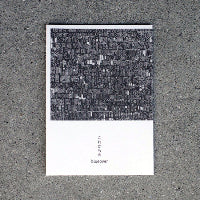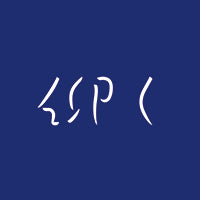Mikey Lust Anatomy
This time, we will explain about "lasts," which are the core of shoe brand fitting. If you are considering purchasing blueover or would like to know more about blueover lasts, please read on.
What is Last?
A last is like a mold that wraps the upper around to give it shape when making shoes. In the past, it was made of wood, but now it is mostly made of resin or aluminum. Specialized shoe manufacturers will create original lasts for their brand, but when making shoes for OEM, they probably use lasts that the factory owns. By the way, blueover's lasts are original lasts created in collaboration with craftsmen.

Well, the last is a very important part of a shoe. If the last doesn't fit, no matter how good the shoes look, they will hurt and you won't be able to walk in them. Everyone has different foot shapes, and they are naturally different between Westerners and Japanese, and it's only natural that Japanese people have a variety of foot shapes as well. And the shape of the last is decided by the type of person the brand wants to wear the shoes. It is an important part that can be said to be the skeleton of the brand, so to speak.
blueover designed a last (mikey last) for Japanese feet .
Many Blueover models use the Mikey last, so if you read this, you will be able to understand the fitting of Blueover shoes. I hope it will be helpful for your future shoe purchases.
So, I would like to take a look at the thoughts that have been put into each of Blueover's shoes, as seen from the end.
① Foot length
Foot length refers to the length of the foot from heel to toe.

But I would like to add a little more.
Generally, many people think that foot length equals shoe size, but this interpretation can lead to mistakes. Shoes sometimes have a gap at the toe called "waste space". In leather shoes, this is sometimes used for appearance purposes such as the silhouette, but from a functional perspective, it is also used to make it easier to move your toes when wearing them, so you can brace yourself and avoid fatigue. For example, even if a shoe size is listed as 27.5cm, when you measure the last foot length, it may be 280mm or 285mm. Each company thinks differently about this number, so it is difficult to say for sure.

Blueover's Mikey last incorporates a margin. There is a gap of about 13 mm for the shoe size . In other words, for a shoe size 26.5 cm, the foot length is 278 mm. This is the optimal value for comfortable wear for customers who usually wear 26.5 cm or 27.0 cm. (When measuring samples from other companies, the margin was generally 5 to 10 mm.)
② Foot circumference (width)
It is the width. The width is the length measured around the foot from the base of the big toe to the base of the little toe, expressed as A to G. Basically, A is narrower and G is wider. The most common widths are D and E (see this page for details). Mikey last is <width E>.

Generally speaking, the shape of Japanese feet is said to be "wide and high instep". From what we have seen so far, the feet of our customers tend to be wide, but the instep is not high, and we think it is of average height. Therefore, blueover's lasts are designed with a width in the range of D to E.
Many people use the width (foot circumference) to gauge the tightness or looseness of the fit, but there are some aspects that cannot be captured by this number alone. The Mikey last is width E, but in reality it may feel a little tight. The reason for this is that it is linked to the next "foot width".
③Foot width (bottom gauge)
As I mentioned briefly earlier, after looking at the feet of my customers, I would not say that the instep of Japanese people is high, and their feet tend to be wider.
In fact, this width design is a distinctive feature of Mikey Last .

The width of the foot refers to the "straight line width between the protruding part at the base of the big toe and the protruding part at the base of the little toe." We often hear that NIKE is narrow and ASICS is easy to wear, but I don't think anyone actually measures the bottom gauge to find out. So this time, we disassembled sneakers and extracted the bottom gauge to compare the foot width of our shoes with that of other companies (we disassembled many, but posting them all would be too complicated, so we picked a few). Then we could see differences that we hadn't seen before.
*Bottom gauge: The silhouette seen when looking at the last from the bottom. It shows the shape of the toes, width of the foot, and heel line. It cannot be seen in the finished shoe.

Comparing the length of the feet, you can see that the front part of the Mikey last (outer foot to base of little toe to toe to ball of foot) has a relaxed line.
And the reason why the instep is a little tighter than the width is because the width is wider. Since the width is determined by the foot circumference, the width of a shoe with a narrow foot width and high instep will be the same as that of a shoe with a wide foot width and low instep. In other words, the instep of this Mikey last will feel tighter than a standard E width shoe. However, since the shape of the foot changes depending on external pressure, some may think that if the foot circumference value is the same, the fit will be the same, but we want the foot to be worn in a natural state, so we aim for a natural shape that suits Japanese people.
④Toes (top line)
The shape of the toe is rounded to match the Egyptian shape that is common among Japanese people. This line is relatively similar to other sneakers. It is pulled by the width of the foot, and although it is gentle, I think it can be said to be a general toe shape.

Let's take a look at the final specifications here.
[Mikey Last Details]
For shoe size 26.5cm
Foot circumference (width) 252mm [E]
Foot length 278mm (13mm extra)
Foot width: Wide
Round toe
Looking at the numbers, we can see that the Mikey last is a width E (standard) but is designed for a wide foot. And because the width is determined by the circumference of the foot, the relationship between the width and the height of the instep is not necessarily linked, so the instep is a little low.
This is the result of blueover's consideration that Japanese feet are "wide" and that the "instep" is not high. In addition, the shoes are not for strenuous exercise, but are made with the idea of making shoes that are comfortable to wear for long periods of time while being "standing and walking", with a loose fit above the instep, but with a firm hold on the instep.
By the way, I always wear 27.0-27.5 cm for NB and 27.5-28.0 cm for NIKE, but 26.5 cm is just the right size for blueover. This is probably because I was wearing it according to the width of my foot, so it was larger than my actual foot length. When I measured it with a foot measuring device, it was 26.5 cm.
This time, we investigated and compared many samples from other companies to learn more about our lasts. Blueover is by no means a flashy shoe, but we hope that everyone can see that it is a shoe that is designed even in places that cannot be seen. We would like to continue making better shoes in the future. If you have any concerns about the fit or any areas for improvement, please feel free to contact us and let us know.
We hope you will continue to support blueover.





